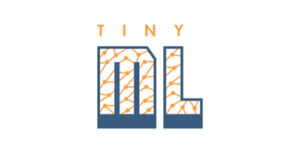 Aspinity CTO Brandon Rumberg recently presented a webcast as part of the tinyML Talks webcast series on how analog processing revolutionizes the power efficiency of always-on sensing systems by intelligently reducing the amount of data that requires digitization. Always-listening systems are continuously collecting and analyzing vast amounts of sound data to listen for a keyword or a specific sound event that usually happens just a small percentage of the time. The challenge that system designers face is to accurately detect these random events in ever smaller and more portable devices, while at the same time, maintaining battery life.
Aspinity CTO Brandon Rumberg recently presented a webcast as part of the tinyML Talks webcast series on how analog processing revolutionizes the power efficiency of always-on sensing systems by intelligently reducing the amount of data that requires digitization. Always-listening systems are continuously collecting and analyzing vast amounts of sound data to listen for a keyword or a specific sound event that usually happens just a small percentage of the time. The challenge that system designers face is to accurately detect these random events in ever smaller and more portable devices, while at the same time, maintaining battery life.
The one thing that all of these devices have in common is that the vast majority of the sound content collected, digitized, and processed isn’t relevant for the particular application, wasting up to 90% of battery life processing data that will simply be thrown away. However, Aspinity’s new AnalogMLTM chip changes this paradigm: It provides an ultra-low-power way to analyze analog sound data, directly upon entry into the device, to determine if it is important enough to use high power resources for further digitization and analysis.
Tiny, battery-powered devices do not have the significant resources required to handle the processing of all of the data they collect – so we need to think about where we put the divide between analog and digital data processing in order to have the most efficient system architecture. The Aspinity approach to always-on sensing resembles the highly efficient way that the human auditory system continuously acquires sensory input – pulling the analog-to-digital divide closer to the front of the audio signal chain in order to spend just a small amount of energy up front to decide whether it is worth spending additional energy on digital processing.
For further details about why it’s more efficient to reduce the amount of data moving around a system prior to digitization, watch Brandon’s full webinar here.